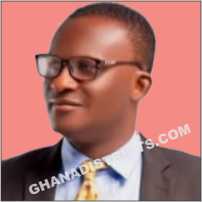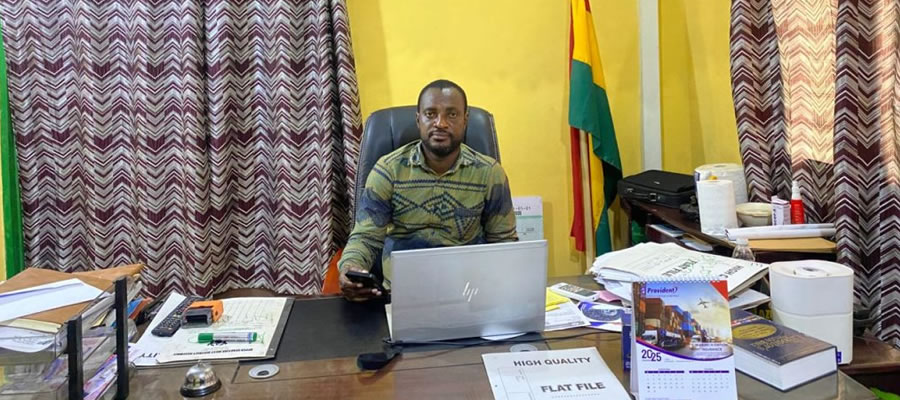

The main sources of energy in the district are electricity, firewood, sunlight, generators and kerosene. Electricity is a major source of energy for industrial activities in the Municipality. Petrol and diesel are used in transport and industry, while kerosene is used mainly for lighting. The use of liquefied petroleum gas for cooking is on a limited scale. Important renewable energy sources, such as wind and solar, do not make the required impact due to inadequate research and development. The main sources of water include wells, rivers, streams and boreholes. However, in the capital, water is provided through pipes but it is untreated.
A dam, constructed on the Nikoko River with the aim of improving the quality of water from the river, is now full of weeds and has been abandoned. There are two hospitals in the district along with four clinics, three health posts, one health centre, one maternity, one health home and one sick bay. Both hospitals are located at Dunkwa. The Ministry of Health in the Municipality has, over the past five years, initiated various health improvement programmes, which have expanded immunization and lowered infant mortality.
To improve sanitation, communities are mobilised to provide ventilated improved pit toilets at their health institutions.
A programme of dental health was initiated in 1993 through intensive oral health education, which has reached about 50% of the population. First cycle educational institutions can be found in almost every settlement in the district. Primary schools constitute 41% of the total number of schools in the area. The second cycle institutions comprise of three senior secondary schools (SSS) and one vocational school. Male enrolment in the schools is 54% as compared to the female percentage of 46. The district has about 87% trained teachers out of a total of 723 teachers at the primary and JSS levels. The total number of teachers presents a teacher-pupil ratio of 1:40 which equals the national average.
Social And Economic Infrastructure
· Health
· Educational Institutions
· Water Supply
· Financial Institutions
· Power Supply
· Road Networks
Water
· Number of settlements with pipe-borne water are 3 (Dunkwa, Diaso and Ayanfuri)
Energy
The main sources of energy in the District are wood fuel (charcoal, firewood), Kerosene, electric power, Petroleum and LPG. There are three (3) filling stations and two (2) LPG distribution points in the District all located in Dunkwa-On-Off, the District capital. Electricity is also a major source of energy for the mining, industrial and domestic sectors. Currently only 19 communities, namely:- Buabinso, Akropong, Adwumain, Kyekyewere, Asikuma, Kwame Prakrom, Ayanfuri, Gyaman, Nkotumiso, Denkyira Obuasi, Jameso - Nkwanta, Diaso, Maudaso Agona Port, Ntom and Abuakwa Bremang are connected to the national grid.
The following communities’ are also earmarked to be connected to the national grid under the Fourth Self Help Electrification Programme. (SHEP 4) These are: Dunkwa-On-Offin, Mfuom, Abesewa, Babianiha Esaase, Akyempim, Mbradam, Nkwanta, Asuadee and Amanase. To promote industrial development and thus improve living standards, there is the need to speed up the Rural Electrification project (SHEP) in the District.
Telecommunication
There are three cellular phone networks which operate in the District. These are Areeba, Tigo and One-Touch. The district capital Dunkwa and Ayanfuri, 15km away from Dunkwa enjoy the services of land telecommunication. There are about ten private communication centres, all spread out in Dunkwa. Telephone reception in the district has improved with the replacement of the obsolete cables and the old digital equipment of 300 lines capacity with a modern Acatel equipment of 3000 lines capacity. Plans are underway for the following communities to get communities services: Diaso, Ayanfuri, Twifo Kyebi, Denkyira Obuase, Kyekyewere and Asikuma.
Postal Services
The district has one Departmental Post Office at Dunkwa-On-Offin and postal agencies at Ayanfuri, Denkyira Obuasi, Diaso, Kyekyewere and Twifo Kyebi. The departmental post office has 600 boxes. Diaso and Ayanfuri with 30 boxes apiece. The remaining postal agencies have not reached the level of having boxes The low demand for post boxes has been attributed to the absence of brisk economic or commercial activities in the district.
The Dunkwa Departmental Post Office provides the following services, both internal and external; remittance services such as postal and money order transfer services. Other allied services provided include the sales of passport forms and post shop. However, the services of the postal agencies are merely the sales of stamps and distribution of letters. In view of immobility problems, the sector depends on the goodwill of transport owners and drivers for the internal delivery of messages and mails to the postal agencies. Nevertheless, there is a - 24 hour delivery and dispatch of mails from the Department Postal Office at Dunkwa to the central pool in Kumasi
Railways
Railway transport is an important means of transportation in the municipality. The railways network which measures up to about 67km run through the southern portion to the northern section. Train Services are obtainable from Dunkwa to Kumasi, Awaso and Takoradi. There are about 10 - railway station evenly distributed in the District with about six trains obtainable per day.
There are rail services for both passengers and freight. The freight includes bauxite, logs and cocoa mainly. With the exception of bauxite, the other freight has lost its value to the road sector due mainly to the following:
Better substitute offered by the road sector and reliability.
Problems besetting the services in the district include: Rising cost of fuel Rising cost of wooden slippers for the rail lines Weakened joints of the rail lines Poor patronage (in terms of passenger and freight) as part of its development programmes, efforts are being made obtain new wagons, get the rail joints strengthened and laying of cables to improve inter stations communication system.
Transport
The main means of transportation in the district are road and railway.
Road
There are about 47 feeder roads in the District with a total length of 390km comprising 240km and 150km engineered and unengineered roads respectively. The highways roads are made up of 216km (93km tarred and 123km awarded) These roads are connected with Dunkwa, the District capital. The condition of the sector roads in general could be described as average as they are motorable throughout the year. However, there are several of them that either needs regraveling, reshaping or .sport improvement. Most of these roads link food production market centres.
Road Network
- The Assembly has 47 feeder roads with a total length of 299km. Of these highways constitute 153km.
- These roads are well connected with Dunkwa, the Municipal capital. Railway transport is an important means of transportation in the municipality.
- The railway network measures up to about 67km and it runs through the southern portion to the northern portion of the district.Information and Communication TechnologyMobile phone usage in the Municipality is about 47.7 percent. Male mobile phone usage is more than female by 9.4 percent. Out of 50,684 persons 12 years and older in the Municipality internet facility usage only 4.8 percent, About 68.4 percent of male use internet facility and 31.6 percent for females. Household ownership of fixed telephone lines in the Municipality is 2.4 percent. Of these, males constitute the highest proportion of household who owns fixed telephone lines (68.8%) while that of females is 31.2 percent. Household ownership of desktop or laptop computers in the Municipality is 6.3 percent with males household ownership accounting for 75.8 percent and that of females is 24.2 percent.
Date Created : 11/27/2017 6:53:19 AM










 facebook
facebook
 twitter
twitter
 Youtube
Youtube
 +233 593 831 280
+233 593 831 280 0800 430 430
0800 430 430 GPS: GE-231-4383
GPS: GE-231-4383 info@ghanadistricts.com
info@ghanadistricts.com Box GP1044, Accra, Ghana
Box GP1044, Accra, Ghana